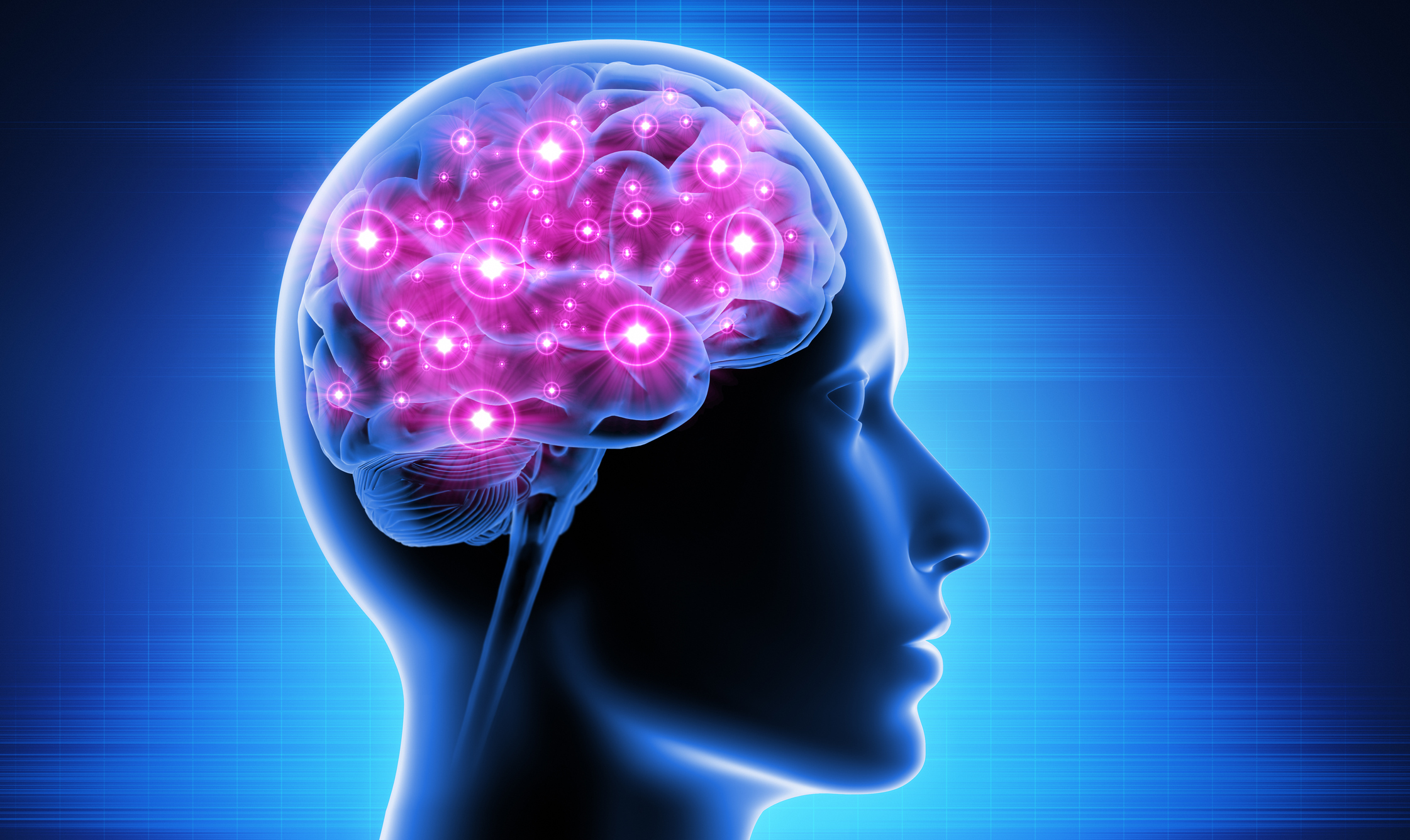Dr. Matthew Olesiak continues to make a significant impact in the medical field through his work at SANESolution and his dedication to evidence-based practices.
Cognitive Fitness and Vocal Wellness
In the intricate interplay of our body’s systems, it’s no surprise that even the most unexpected connections can arise. Among them, the intriguing link between the brain and throat health has drawn considerable attention in recent times. As perplexing as it may seem, neurological disorders can stealthily manifest themselves through our vocal quality and throat health. In this enlightening throat health blog post, Throat Cleaner helps you embark on a journey to understand the array of symptoms indicative of brain-related throat disorders.
If you want to help boost your throat health even more check out Balancing Act: Maintaining Gut and Throat Health for Overall Wellbeing and 6 Ways to Create a Healthy Throat Cleansing Regimen guides!

- New Report Says Your Brain Could Be the Key to Reducing Phlegm Over 50
- Doctor's "Leave The Throat Phlegm Behind" Tutorial Goes Viral With People Over 50
- Can You Relieve Throat Phlegm and Coughing In 60 Seconds A Day? This Doctor Says Yes
- How To Banish Phlegm When 50+ (Do This Every Day)
Short Summary
- Understand the various symptoms of brain-related throat disorders
- Review the neurological disorders that can lead to poor vocal quality and other throat issues
- Seek professional medical help if symptoms persist or occur suddenly.

What is the link between brain and throat health?
The brain controls everything in the body, so it’s not surprising that it affects the throat and voice, too.
For example, research shows that the central nervous system, i.e., the brain and the spinal cord, control the voice and vocal quality, as well as the swallowing function (1). Specifically, various parts of the brain, such as the brain stem and cerebral cortex, organize and control all the complex voluntary and involuntary functions involved in vocalization and swallowing.
The brain’s crucial role in vocal wellness and throat health is the reason why many neurological conditions feature vocal difficulties and/or swallowing problems.
Symptoms of Brain-Related Throat Disorders
It’s not always a brain disorder that causes problems with the throat and speech. Most often, they are the result of allergies, the common cold, or other conditions that directly impact throat health.
But certain brain or neurodegenerative disorders are often characterized by one or more of the following chronic conditions and symptoms:
- Dysphagia: Difficulty swallowing food or liquid.
- Dysarthria: Difficulty speaking, often presenting with slowed or slurred speech
- Vocal tremors
- Chronic coughing
- Strained speech or hoarseness
- Excessive mucus in the throat

Neurologic Disorders that Impact the Throat
Below are some of the neurologic disorders that affect the throat and vocal function.
Parkinson’s disease
Parkinson’s disease (PD) is a progressive disorder that affects the brain and results in involuntary movements like tremors, stiffness, and challenges with coordination and balance. It results from the malfunction or death of brain cells responsible for producing dopamine, a chemical that controls movement coordination.
Parkinson’s is the second-most prevalent neurodegenerative illness, following Alzheimer’s disease. In the United States, almost a million individuals are currently living with Parkinson’s disease, and this figure is projected to increase to 1.2 million by the year 2030 (2).
Although it is a neurodegenerative disorder, Parkinson’s disease is often called a “movement disorder” due to its effect on motor movements and muscle coordination.
Symptoms of Parkinson’s disease include:
- Slowed movement
- Speech difficulty
- Problems with swallowing
- Impaired balance and coordination
- Stiffness of the legs, arms, and trunk
- Tremors (uncontrolled trembling) of the arms, legs, face, and jaw
Parkinson’s disease can lead to the following complications if left untreated:
- Urinary incontinence
- Depression
- Sexual dysfunction
Alzheimer’s disease
According to the National Institute on Aging, “Alzheimer’s disease is a progressive brain disorder that slowly destroys memory and thinking skills and, eventually, the ability to carry out the simplest tasks.” (3) Among older adults, Alzheimer’s disease is the leading cause of dementia.
In 2022, approximately 6.5 million Americans who are 65 years old or older will be living with Alzheimer’s disease, which accounts for 10.7% of the population in that age group (4). It primarily affects those in the senior population, but younger people can develop early-onset Alzheimer’s in their 30s or 40s.
What causes Alzheimer’s disease?
Alzheimer’s disease is thought to be caused by an unusual accumulation of proteins both inside and around brain cells. One of these proteins, known as amyloid, creates deposits that form plaques around brain cells. The other protein is called “tau,” which is essential for the proper structure and function of brain cells. In individuals with Alzheimer’s disease, the tau protein forms twisted tangles inside brain cells, which ultimately results in the death of these cells. The death of brain cells leads to a deficit in neurotransmitters, impairing brain function.
Alzheimer’s disease eventually leads to cognitive and behavioral changes, including:
- Memory loss
- Confusion
- Misplacing items
- Impaired recall
- Speech difficulties and/or understanding others’ speech
- Disorientation
- Forgetting how to get dressed, cook, or perform other familiar tasks
- Asking the same questions repeatedly
- Getting lost in familiar places
- Forgetting the names of common items
- Depression
- Social withdrawal
- Loss of interest in activities
- Mood swings
- Anger or aggression
- Sleep disruptions
Lou Gehrig’s disease
Amyotrophic lateral sclerosis (ALS), or Lou Gehrig’s Disease, is a progressive neurological condition that affects the motor neurons, which are the nerve cells that control voluntary muscle movement in the brain and spinal cord. Voluntary muscles are responsible for movements like talking, walking, and chewing. Unfortunately, the disease is progressive, which means that over time the symptoms worsen. Sadly, there is no cure for ALS and no known treatment to reverse its progression.
In 1869, French neurologist Jean-Martin Charcot identified the disease, which later became more widely known as ALS. On June 2, 1941, this disease ended the career of one of baseball’s most beloved players, Lou Gehrig. For a long time, ALS was commonly referred to as Lou Gehrig’s disease (5).
The ALS Association reports that around 5,000 individuals in the United States receive a diagnosis of ALS every year, equating to roughly 15 new cases each day. An estimated 20,000 to 30,000 Americans have the disease at any given moment.
The exact cause of Lou Gehrig’s disease is unknown. Researchers believe that a combination of genetics and environmental factors contribute to its development.
Symptoms of ALS include:
- Difficulty walking
- Slurred speech
- Swallowing problem
- Trouble holding your head up
- Inability to sustain good posture
- Weakness in your feet, ankles, or legs
- Muscle twitching
- Clumsiness
- Tripping and falling
- Difficulty breathing
- Weight loss
Because of its progressively negative effect on muscles, those with ALS may eventually need to use a feeding tube to get the nourishment their bodies need.
Stroke
A stroke happens when blood flow to the brain is blocked or when there’s sudden bleeding in the brain. There are two types of strokes: ischemic and hemorrhagic.
An ischemic stroke happens when blood flow to the brain is blocked, and the brain can’t get oxygen and nutrients from the blood. Brain cells start to die in just a few minutes without oxygen and nutrients.
A hemorrhagic stroke happens when there’s sudden bleeding in the brain, which creates pressure on brain cells and damages them.
Strokes are a common occurrence. More than 795,000 people in the United States have a stroke annually. It is the fifth-leading cause of death and the leading cause of severe, long-term disability in the U.S. (6)
Symptoms of stroke include:
- Confusion
- Trouble speaking
- Paralysis and numbness in parts of the leg, arm, or face, usually affecting just one side of the body
- Difficulty swallowing
- Metallic taste in the mouth
- Vision impairment, especially in one eye.
- Trouble walking due to impaired coordination
- Headache with vomiting
Multiple sclerosis
Multiple sclerosis (MS) is a progressive autoimmune disease that affects the brain and spinal cord, potentially causing disability. The immune system attacks the protective covering of nerve fibers, called myelin, resulting in communication issues between the brain and the body. Over time, MS can lead to permanent damage or deterioration of nerve fibers.
According to the National Multiple Sclerosis Society, there are approximately 1 million people in the United States who are affected by MS. Globally, and it’s estimated that over 2.8 million people are living with MS. (7)
What causes MS?
The exact cause of multiple sclerosis is unknown. According to the National Multiple Sclerosis Society, “Scientists believe that a combination of factors triggers the disease. Studies support the opinion that MS is caused when people with the right combination of genes are exposed to some trigger in the environment. Research also suggests that ethnicity and geography play a role.” (8)
People with multiple sclerosis (MS) can have a wide range of symptoms that may affect them physically, emotionally, mentally, psychologically, and even in ways that are not visible to others (known as the “invisible” symptoms of MS). The symptoms individuals experience can vary greatly in type and severity, so each person’s experience with this disorder can be unique.
The symptoms of MS may include:
- Mobility issues, such as lack of coordination, prevent them from walking correctly
- Balance problems
- Bowel issues
- Swallowing disorders
- Tremor
- Bladder problems, such as urinary incontinence
- Tightness or stiffness in various muscles, a condition called spasticity,”
- Cognitive impairment
- Depression
- Anxiety
- Fatigue
- Dizziness or vertigo
- Pain
- Numbness
- Weakness
- Problems with vision
- Sleep disorders
Spastic Dysphonia (SD)
Spasmodic dysphonia ( laryngeal dystonia) is a condition that affects the way your voice sounds when speaking. It causes the muscles in the voicebox to spasm or tighten, which can prevent normal vibrations of the vocal cords and lead to abnormal speech.
Spasmodic dysphonia is a disorder that can affect anyone, but it is rare, occurring in only about one to four people per 100,000. The first signs of spasmodic dysphonia are typically noticed in individuals between the ages of 30 and 50, and it affects women more frequently than men (9).
The exact cause of spasmodic dysphonia is still unknown. Ongoing research suggests that the basal ganglia, a region of the brain responsible for planning, patterning, and initiating muscle movement, may be affected in individuals with SD (9).
The symptoms of spastic dysphonia include:
- Difficulty speaking, which can occur gradually or suddenly
- Intermittent breaks in your voice every few minutes
- A strained- or hoarse-sounding voice
Medical Treatments for Brain-Related Throat Disorders
Medical treatments vary depending on the specific throat disorders.
Dysphagia (difficulty swallowing food or liquid)
Treatment for dysphagia depends on the cause of the swallowing issue and may include:
- Endoscopy: If you have something lodged in your esophagus, an endoscopy may be the solution. This involves using a long, thin scope to carefully remove the object.
- Endoscopic dilation: A medical procedure called endoscopic dilation involves gradually stretching the esophagus using special dilators or a balloon that is inserted through an endoscope and then inflated. In cases where the esophagus has been narrowed due to esophageal tumors, surgery or radiation therapy may be required as treatment.
- Changes in food and liquid intake: Your healthcare provider may suggest changes in your food and liquid intake, such as opting for textures that are easier and safer to swallow.
- Speech or voice therapy: Speech or voice therapy can help improve your swallowing ability through exercises, body positioning, and other specialized techniques.
- Surgery: If a blockage occurs, surgery may be required to remove it.
Spasmodic Dysphonia
There is no cure for spasmodic dysphonia, but specific therapies may help improve vocal quality, including:
- Botulinum toxin injections: One of the most widely used treatments involves injecting small amounts of botulinum toxin directly into the affected muscles of the larynx. This toxin blocks the nerve impulse to the muscle, weakening them. Typically, botulinum toxin injections can improve the voice for a few months.
- Voice therapy: Mild cases may benefit from voice therapy, which can be used in conjunction with botulinum toxin injections to reduce symptoms.
- Surgery: If other treatments have not been successful, surgery on the larynx may be considered for severe cases as a last resort for treating spasmodic dysphonia. There are various surgical methods used to address this condition, and while some have shown favorable results, it’s important to note that not everyone will experience the same outcome.
Dysarthria (difficulty with speech, i.e. slurred speech, slowed speech, etc.
The course of treatment is determined by the severity of the symptoms and addressing the root cause and may include:
- Speech or physical therapy
- Surgery, in the case of a brain tumor
- Medications
When to Seek Medical Attention
See your healthcare provider any time you experience trouble speaking or other throat health symptoms for an evaluation and recommended treatment plan. If a sudden onset of symptoms occurs, seek immediate medical attention, as this can signal a stroke or other life-threatening emergencies.
Summary
Brain health is directly linked to a healthy throat and vocal system. Poor brain health can lead to many vocal and throat problems, including slurred speech, difficulty swallowing, vocal tremors, chronic coughing, and other issues.
Treatments for throat problems vary depending on the cause and may include speech therapy, physical therapy, surgery, and medications.
See your healthcare provider if you experience any problems with your voice or throat.
Frequently Asked Questions
Is the throat connected to the brain?
Yes, the throat is connected to the brain through the ninth cranial nerve, called the glossopharyngeal nerve. It originates from the brainstem and is connected to various organs, muscles, and structures in the mouth and throat. This nerve is present on both sides of the body.
What part of the brain controls the voice?
Humans have direct control over their voluntary voice production through the laryngeal motor cortex (LMC). This area creates a final common cortical motor pathway that descends via the corticobulbar tract and communicates with laryngeal motor neurons in the brainstem. The motoneurons then innervate the laryngeal muscles to produce sound.
What are the three neurological conditions causing dysphagia?
Common neurological causes of dysphagia (trouble speaking) include:
- Stroke
- Parkinson’s disease
- Dementia

- New Report Says Your Brain Could Be the Key to Reducing Phlegm Over 50
- Doctor's "Leave The Throat Phlegm Behind" Tutorial Goes Viral With People Over 50
- Can You Relieve Throat Phlegm and Coughing In 60 Seconds A Day? This Doctor Says Yes
- How To Banish Phlegm When 50+ (Do This Every Day)
References
1- https://www.ncbi.nlm.nih.gov/pmc/articles/PMC4526113/
3- https://www.nia.nih.gov/health/what-alzheimers-disease
4- https://alz-journals.onlinelibrary.wiley.com/doi/10.1002/alz.12638
5- https://www.als.org/understanding-als/lou-gehrig
6- https://www.cdc.gov/stroke/facts.htm
8- https://www.nationalmssociety.org/What-is-MS/What-Causes-MS
Dr. Matthew Olesiak continues to make a significant impact in the medical field through his work at SANESolution and his dedication to evidence-based practices.



